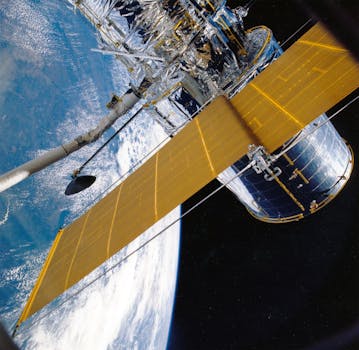
Navigating the Skies: Insights into Recent Satellite Telecommunications Innovations
Navigating the Skies: Insights into Recent Satellite Telecommunications Innovations have revolutionized the way we communicate and access information. With the increasing demand for global connectivity, satellite telecommunications have become a vital component of modern communication systems. In this article, we will delve into the recent innovations in satellite telecommunications and their impact on various industries.
Satellite telecommunications have come a long way since the launch of the first commercial communications satellite, Intelsat 1, in 1965. Over the years, significant advancements have been made in satellite technology, leading to improved performance, increased capacity, and reduced costs. Recent innovations in satellite telecommunications have focused on developing new technologies and systems that can provide faster, more reliable, and more secure communication services.
Advancements in Satellite Technology
One of the significant advancements in satellite technology is the development of high-throughput satellites (HTS). HTS satellites are designed to provide high-speed broadband services, with capacities of up to 1 Tbps. These satellites use advanced technologies such as phased arrays and beamforming to provide targeted and efficient broadband services. HTS satellites have revolutionized the satellite communications industry, enabling the provision of high-speed broadband services to remote and underserved areas.
Another significant innovation in satellite telecommunications is the development of small satellites, also known as smallsats. Smallsats are smaller and lighter than traditional satellites, making them less expensive to launch and operate. Smallsats are being used for a variety of applications, including Earth observation, communication, and scientific research. The use of smallsats has democratized access to space, enabling new companies and organizations to participate in the satellite industry.
Impact of Satellite Telecommunications on Industries
Satellite telecommunications have had a significant impact on various industries, including aviation, maritime, and healthcare. In the aviation industry, satellite communications are used to provide in-flight connectivity and navigation services. Satellite communications have also enabled the use of unmanned aerial vehicles (UAVs) for a variety of applications, including surveillance and inspection.
In the maritime industry, satellite communications are used to provide communication services to ships and vessels. Satellite communications have enabled the use of navigation systems, such as GPS, and have improved safety and security at sea. Satellite communications have also enabled the use of IoT devices on ships, enabling real-time monitoring and tracking of cargo and vessels.
In the healthcare industry, satellite communications are used to provide telemedicine services to remote and underserved areas. Satellite communications have enabled the use of remote health monitoring systems, enabling healthcare professionals to monitor patients remotely and provide timely interventions.
Future of Satellite Telecommunications
The future of satellite telecommunications looks promising, with significant investments being made in the development of new technologies and systems. One of the significant trends in satellite telecommunications is the development of satellite constellations. Satellite constellations are networks of satellites that work together to provide global coverage and capacity. Satellite constellations are being developed by companies such as SpaceX and OneWeb, and are expected to provide high-speed broadband services to underserved areas.
Another significant trend in satellite telecommunications is the use of 5G and edge computing. 5G and edge computing are being used to provide low-latency and high-speed communication services, enabling the use of applications such as IoT, AI, and VR. The use of 5G and edge computing in satellite telecommunications is expected to enable new use cases and applications, including smart cities and smart grids.
In conclusion, recent innovations in satellite telecommunications have revolutionized the way we communicate and access information. With the increasing demand for global connectivity, satellite telecommunications are expected to play a vital role in providing high-speed broadband services to remote and underserved areas. As the satellite industry continues to evolve, we can expect to see new technologies and systems being developed, enabling new use cases and applications.

